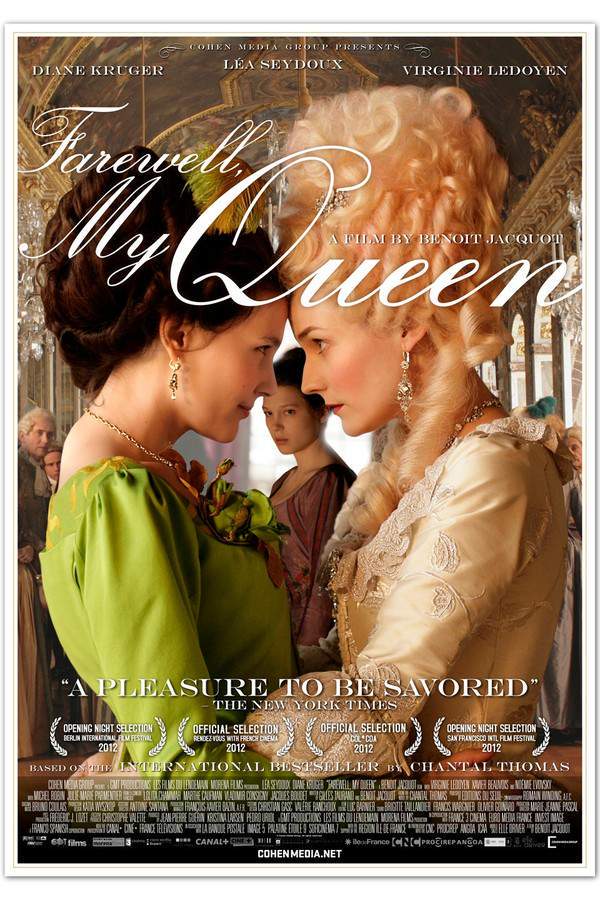
The Death of Louis XIV 2017
Directed by

Albert Serra
Made by

Cinema Guild, The
Test your knowledge of The Death of Louis XIV with our quiz!
The Death of Louis XIV Plot Summary
Read the complete plot summary and ending explained for The Death of Louis XIV (2017). From turning points to emotional moments, uncover what really happened and why it matters.
After returning from a hunting expedition on August 9, 1715, Louis XIV finds himself bedridden, grappling with declining cardiovascular health as an embolism in his leg becomes gangrenous. This unfortunate turn of events leads to an increasingly fragile state, rendering him incapable of fulfilling his royal responsibilities. Though there is a temporary rally, his condition deteriorates swiftly, culminating in a fever fueled by the infection.
As whispers of the King’s deteriorating health begin to circulate within the illustrious Court of Versailles, his chief physician forbids any further travels. In a desperate attempt to control the narrative, the Royal Family endeavors to censor the flow of information regarding Louis XIV’s decline. Subsequently, four eminent physicians from the University of Paris are summoned to assess the situation. However, the grave diagnosis of gangrene is only confirmed when Georges Mareschal, his chief doctor, makes an incision in the ailing monarch’s infected leg and examines the wound.
Despite the stark advice from Mareschal regarding amputation, the resolute King refuses to entertain such thoughts, instead preparing himself for his impending demise. He seeks solace in spiritual rites, receiving the sacraments of confession and the final unction. In a display of statesmanship, he carefully organizes a regency for his young great-grandson, the future Louis XV, enlisting the help of his mistress Madame Maintenon and Louis Auguste, Duke of Maine, one of his older illegitimate offspring, who is appointed regent until the five-year-old Louis XV reaches adulthood. Furthermore, Francois de Neufville, duc de Villeroy is designated as Louis XV’s legal guardian until he comes of age.
In a poignant gesture, the ailing monarch imparts wisdom on governance to his successor, a testament to his enduring commitment to the throne. As several quacks attempt to remedy his ailment, the King’s condition continues to decline further, with gangrene overtaking his frail body. On August 30, he slips into a coma, and on September 1, 1715, at precisely 8:15 AM, he passes away.
Following his death, a post-mortem examination reveals his wishes to separate his heart and intestines from the rest of his body, a poignant reflection of his thoughts on mortality. On September 9, 1715, after lying in state for public mourning, his body is respectfully interred within the Basilica of Saint-Denis, marking the end of an era.
The Death of Louis XIV Timeline
Follow the complete movie timeline of The Death of Louis XIV (2017) with every major event in chronological order. Great for understanding complex plots and story progression.
Return from Hunting Expedition
On August 9, 1715, Louis XIV returns from a hunting expedition, which marks the beginning of his declining health. The adventures of the day are overshadowed by the onset of his medical issues, signifying a precarious turn in his royal journey.
Declining Health
After returning from the hunt, Louis XIV finds himself bedridden due to a severe embolism in his leg, which becomes gangrenous. This medical crisis leads to an inability to fulfill his royal duties, plunging the kingdom into uncertainty.
Whispers of Illness
As rumors about the King's health begin to circulate in Versailles, the royal family feels the pressure of public scrutiny. In an effort to maintain their reputation, they attempt to censor information regarding Louis XIV's declining state.
Summoning Physicians
Four esteemed physicians from the University of Paris are summoned to assess the deteriorating condition of the King. This decision highlights the gravity of the situation as the royal family seeks expert opinions on Louis XIV's health.
Diagnosis of Gangrene
The chief physician, Georges Mareschal, conducts an incision on the King's infected leg, confirming the diagnosis of gangrene. This moment serves as a harsh reality for the royal family, bringing forth the urgency of the King’s condition.
Refusal of Amputation
Despite Mareschal's stark advice to consider amputation, Louis XIV resolutely declines to entertain the notion. Instead, he prepares for his imminent death, showcasing his acceptance of fate amid the turmoil.
Spiritual Preparation
In the face of his mortality, the King seeks solace through spiritual rites, embracing the sacraments of confession and final unction. This moment underscores his deep-rooted faith and emotional struggle in coming to terms with his impending demise.
Organizing the Regency
Demonstrating his commitment to the throne, Louis XIV meticulously organizes a regency for his great-grandson, Louis XV. He enlists key figures, including his mistress, Madame Maintenon, and Louis Auguste, Duke of Maine, to ensure a stable transition.
Imparting Wisdom
In a poignant moment, the King shares his wisdom regarding governance with his successor, reflecting his dedication to the monarchy. This symbolic gesture highlights his concern for the future of France even as he faces his own end.
Decline and Coma
As Louis XIV’s health deteriorates further, quacks attempt various remedies to no avail. His suffering culminates in a coma on August 30, illustrating the deepening tragedy of his condition.
Death of the King
On September 1, 1715, at precisely 8:15 AM, Louis XIV passes away, marking the end of a significant era. His death brings a profound sense of loss to both the monarchy and the people of France.
Post-Mortem Wishes
A post-mortem examination reveals Louis XIV's final wishes regarding the separation of his heart and intestines from the rest of his body. This act reflects his contemplation of mortality and his desire for a specific burial arrangement.
Public Mourning
After lying in state for public mourning, Louis XIV's legacy is honored by his kingdom. The public outpouring of grief illustrates the King's significant impact on France over his long reign.
Interment at Basilica of Saint-Denis
On September 9, 1715, Louis XIV is respectfully interred within the Basilica of Saint-Denis. This final resting place symbolizes the end of his multifaceted reign and the transition to a new era under Louis XV.
The Death of Louis XIV Characters
Explore all characters from The Death of Louis XIV (2017). Get detailed profiles with their roles, arcs, and key relationships explained.
Louis XIV
Louis XIV, known as the Sun King, is depicted as a once-mighty monarch whose resolve and dignity remain evident as he faces death. His refusal to accept amputation showcases his profound connection to royal identity and the weight of expectation upon him, leading to a poignant struggle between duty and deterioration.
Georges Mareschal
Georges Mareschal, as the chief physician, embodies the conflict between the realities of medicine and the will of his king. His expert guidance serves as both a medical authority and a moral compass, emphasizing the tension between loyalty to the crown and the pragmatic approach to the king's failing health.
Madame Maintenon
Madame Maintenon plays a critical role as the king's mistress and confidante, offering emotional support during his final days. Her presence illustrates the personal ramifications of royal life, as she balances her own sentiments with her loyalty to Louis XIV and the future of the monarchy.
The Death of Louis XIV Settings
Learn where and when The Death of Louis XIV (2017) takes place. Explore the film’s settings, era, and how they shape the narrative.
Time period
1715
The movie is set during the early 18th century, a pivotal period in French history marked by the decline of absolute monarchy. Louis XIV's reign, known for its grandiosity and cultural flourishing, faces a critical transition as the nation prepares for the ascension of a youthful Louis XV after the king's death.
Location
Versailles, Basilica of Saint-Denis
Versailles, once the royal residence of Louis XIV, is renowned for its opulent architecture and expansive gardens, symbolizing the absolute monarchy of the Ancien Régime. The Basilica of Saint-Denis is a significant burial site for French monarchs, serving as a testament to the historical lineage of France and the transition of power.
The Death of Louis XIV Themes
Discover the main themes in The Death of Louis XIV (2017). Analyze the deeper meanings, emotional layers, and social commentary behind the film.
👑
Monarchy
The theme of monarchy is central to the film, exploring the burdens of royal duty through Louis XIV's declining health. His attempts to secure the future of the throne reflect the significance placed on lineage and governance, revealing the vulnerabilities inherent in absolute power.
🕊️
Mortality
Mortality resonates profoundly throughout the film as Louis XIV confronts his impending death. His reflections on life and governance during his last days shed light on the inevitability of death, prompting a contemplation of legacy and how one's life choices are ultimately reconciled with fate.

Coming soon on iOS and Android
The Plot Explained Mobile App
From blockbusters to hidden gems — dive into movie stories anytime, anywhere. Save your favorites, discover plots faster, and never miss a twist again.
Sign up to be the first to know when we launch. Your email stays private — always.
The Death of Louis XIV Spoiler-Free Summary
Discover the spoiler-free summary of The Death of Louis XIV (2017). Get a concise overview without any spoilers.
In the gilded halls of Versailles, the grandeur of the Sun King’s court glitters against a backdrop of quiet unease. The palace, a masterpiece of baroque splendor, teems with courtiers whose elegant gestures mask a subtle undercurrent of anticipation. The film’s tone balances the opulent spectacle of eighteenth‑century France with a lingering melancholy, inviting viewers to feel both the weight of history and the fragility that lies beneath its shining surface.
Louis XIV finds himself confined to his bed as a relentless fever takes hold, forcing the once‑indomitable monarch to confront the limits of his own power. Within his chambers, the world narrows to the steady rhythm of whispered counsel and the steady ticking of an inevitable clock. The atmosphere is rich with austere dignity, yet tinged with the anxious murmurs of those who have long served his will, now glimpsing the prospect of change. As the king’s health dwindles, the court’s polished veneer gives way to a more intimate, vulnerable space where the ruler must weigh his legacy against the stark reality of his condition.
Around him, a circle of familiar faces assembles, each bearing their own devotion and hidden concerns. Madame Maintenon, his trusted confidante, offers quiet counsel, while Louis Auguste, Duke of Maine watches the unfolding scene with a mixture of reverence and ambition. The chief physician, Georges Mareschal, provides clinical insight, his presence a stark reminder of mortality amidst the splendor. Together they navigate a delicate dance of duty, loyalty, and the looming question of succession, setting the stage for a profound exploration of power, mortality, and the fleeting nature of an empire’s glory.
Can’t find your movie? Request a summary here.
Movies with Similar Twists and Themes
Uncover films that echo the narrative beats, emotional arcs, or dramatic twists of the one you're exploring. These recommendations are handpicked based on story depth, thematic resonance, and spoiler-worthy moments — perfect for fans who crave more of the same intrigue.
Featured on this page

What's After the Movie?
Not sure whether to stay after the credits? Find out!
Explore Our Movie Platform
New Movie Releases (2025)
Famous Movie Actors
Top Film Production Studios
Movie Plot Summaries & Endings
Major Movie Awards & Winners
Best Concert Films & Music Documentaries
Movie Collections and Curated Lists
© 2025 What's After the Movie. All rights reserved.






